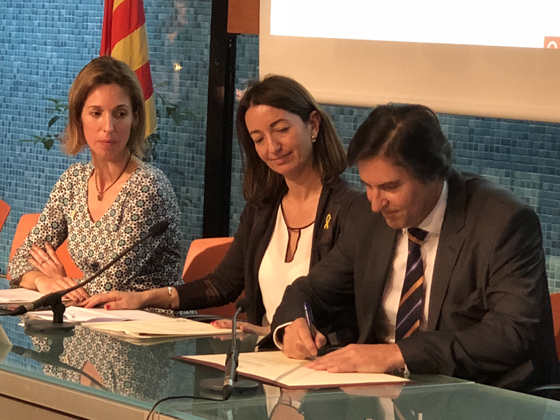The experience of the Catalan cement factories in the use of waste, both as a raw material and as an energy source, will be one of the contributions of Ciment Català in Catalunya Circular, the observatory on circular economy that the Generalitat has launched in May 2018. This space aims to be a point of reference for the development and integration of the circular economy in Catalonia. With some twenty associations and already adhered entities (among them, employers and unions), the platform allows to share good practices that serve as an example for other entities or companies, and it show the progress and the degree of commitment of the Catalan society in this matter.
The cement industry, of which Ciment Català is the highest representative in Catalonia, has been developing in recent years a clear and determined commitment to the implementation of the principles of the circular economy, which is based on the rationalization of the cycles of the resources (materials, water and energy) and the maximization of the utility and the value of the products, components and materials. It is opposed to the linear model of extracting, manufacturing, using and throwing, and the prevention of waste generation, reuse, remanufacturing and recycling of existing materials and products is a priority. This model is framed in the so-called green economy, understood as a broader model that integrates the social dimension and the conservation of ecosystems; an economy that improves human well-being and social equity, and reduces environmental risks.
In particular, the cement plants recycle a large amount of industrial by-products, either to partially replace the raw materials (pyrite ash, litter sludge, smelting sands, demolition waste and construction debris) or as cement additions (ashes flyers from coal-fired power plants, granulated slag from high furnace, industrial pozzolans, industrial plaster), so that the final destination of these wastes can be avoided.
In a complementary way, a policy of substitution of fossil fuels has been applied through the energetic use of waste, such as dry sewage sludge, CSR (recovered solid fuels), wood, meat flours or old tires. In 2016, almost one third of the energy consumed in the cement kilns of Catalonia came from alternative fuels, thus preventing waste to landfill, and minimizing polluting emissions derived from the transport and combustion of fossil fuels.

